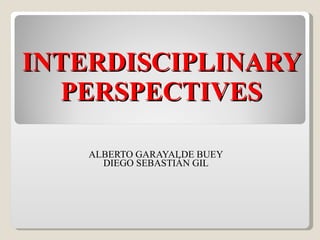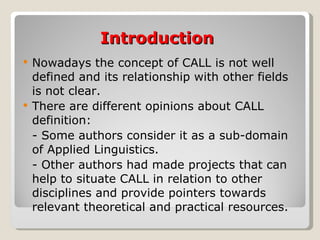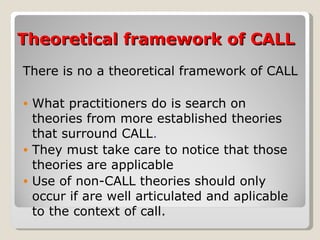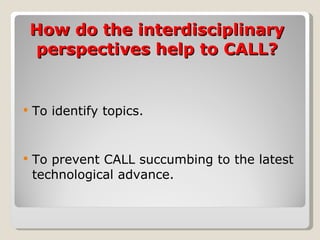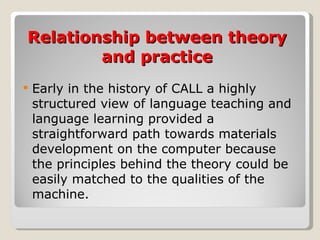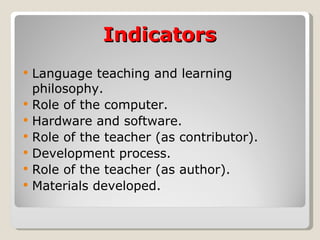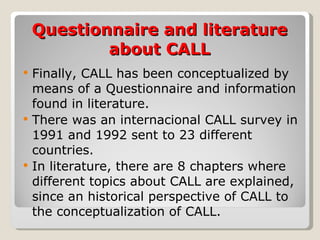5. Alberto and Diego - Interdisciplinary perspectives
- 1. INTERDISCIPLINARY PERSPECTIVES ALBERTO GARAYALDE BUEY DIEGO SEBASTIÁN GIL
- 2. Introduction Nowadays the concept of CALL is not well defined and its relationship with other fields is not clear. There are different opinions about CALL definition: - Some authors consider it as a sub-domain of Applied Linguistics. - Other authors had made projects that can help to situate CALL in relation to other disciplines and provide pointers towards relevant theoretical and practical resources .
- 3. Theoretical framework of CALL There is no a theoretical framework of CALL What practitioners do is search on theories from more established theories that surround CALL . They must take care to notice that those theories are applicable Use of non-CALL theories should only occur if are well articulated and aplicable to the context of call.
- 4. How do the interdisciplinary perspectives help to CALL? To identify topics. To prevent CALL succumbing to the latest technological advance.
- 5. Relationship between theory and practice Early in the history of CALL a highly structured view of language teaching and language learning provided a straightforward path towards materials development on the computer because the principles behind the theory could be easily matched to the qualities of the machine.
- 6. Indicators Language teaching and learning philosophy. Role of the computer. Hardware and software. Role of the teacher (as contributor). Development process. Role of the teacher (as author). Materials developed.
- 7. Questionnaire and literature about CALL Finally, CALL has been conceptualized by means of a Questionnaire and information found in literature. There was an internacional CALL survey in 1991 and 1992 sent to 23 different countries. In literature, there are 8 chapters where different topics about CALL are explained, since an historical perspective of CALL to the conceptualization of CALL.
